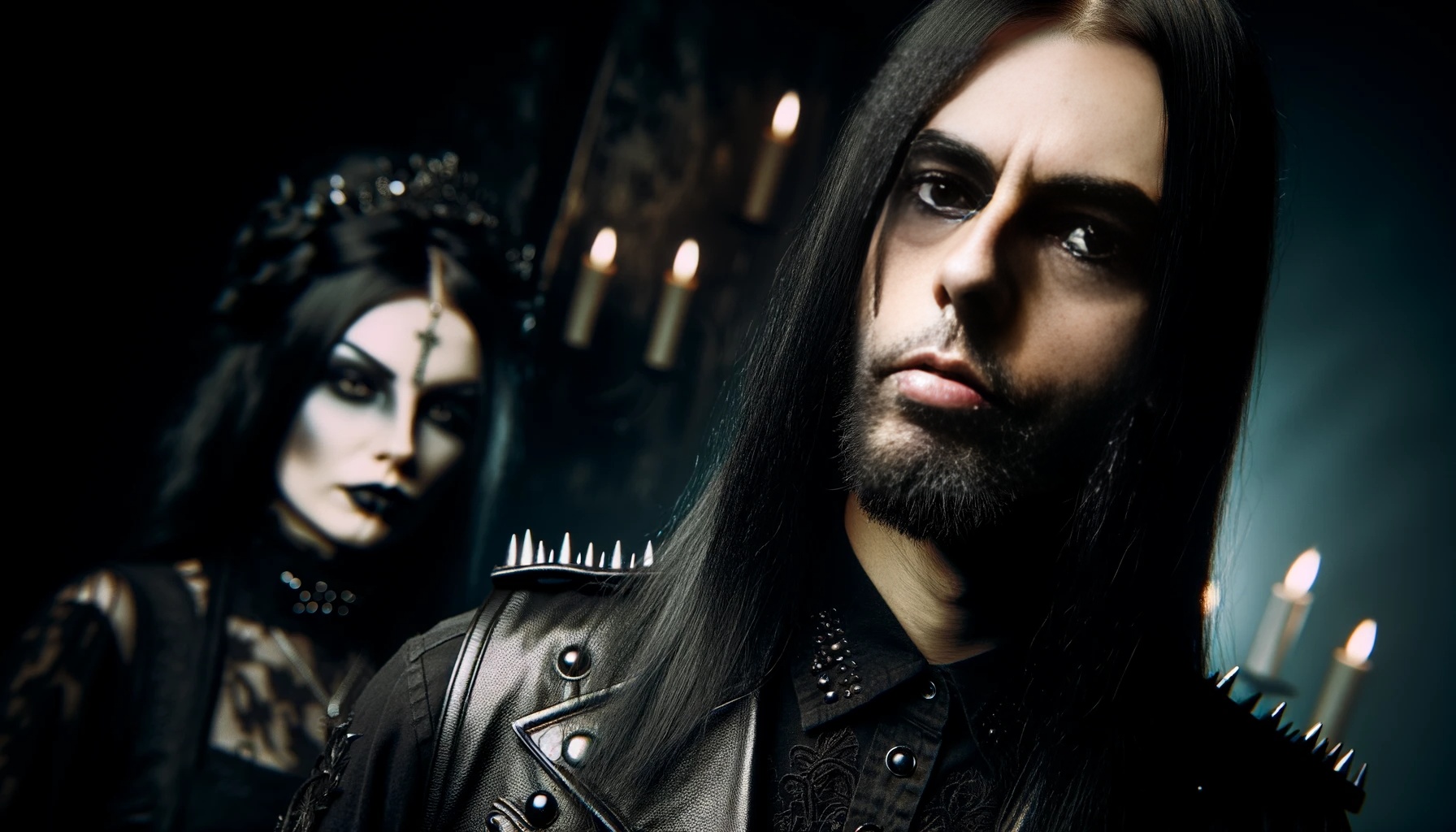Within the darkened corridors of metal and goth music, sexuality pulses as a potent force, weaving tales of desire, deviance, and defiance. These genres, known for their unapologetic exploration of the taboo, delve into sexual themes with an intensity unmatched in the musical landscape. This blog post aims to dissect how metal and goth music addresses sexuality, not merely as a topic of lyrical interest but as a profound expression of cultural and personal identity.

The Boldness of Metal: Sexual Agency and Power
Metal music has long been a bastion of raw, unfiltered expression. Bands like Judas Priest, with tracks such as “Turbo Lover,” and Mötley Crüe, with their overtly sexual “Girls, Girls, Girls,” showcase the genre’s embrace of sexual agency and power. These songs do more than titillate; they empower. They provide a voice to the carnal aspects of human nature often shunned by mainstream discourse.
The power dynamic in metal often flips societal norms, presenting sexuality as an empowering tool rather than a means of exploitation. This theme resonates deeply within the metal community, where power and dominance are celebrated traits, both in the sound of the music and the content of its lyrics. Bands like Rammstein and their theatrical, often controversial performances push these ideas to the forefront, challenging the audience to confront their own views on sexuality and power.

Goth Music: Romanticism and the Macabre
Goth music, with its roots in the post-punk era, intertwines sexuality with themes of romanticism and the macabre. This genre explores the darker, often melancholic side of desire. Bands like Bauhaus and The Cure have masterfully crafted narratives that blend love, death, and eroticism, creating a lush, immersive world where the boundaries between pain and pleasure blur.
The portrayal of sexuality in goth music often carries a mystical, almost otherworldly quality. Lyrics may not directly confront sexual themes as explicitly as metal, but they invoke a sensuality that is enveloped in mystery and introspection. This nuanced approach speaks to the goth ethos of finding beauty in the darker aspects of life, including the complexities of human desire.

Breaking Taboos: Gender and Sexual Identity
Both metal and goth cultures challenge societal norms not just around sexual acts but also in terms of gender expression and sexual identity. Metal bands like Life of Agony, whose lead singer Mina Caputo came out as transgender, highlight the genre’s role in advocating for a broader, more inclusive understanding of gender and sexuality. Similarly, goth music, known for its androgynous icons like Peter Murphy and Siouxsie Sioux, provides a space for individuals to explore and express their identities outside traditional gender norms.
The lyrical content in these genres often reflects a spectrum of sexual identities, challenging the binary and embracing a more fluid conception of gender. This defiance of the normative allows fans and artists alike to find solace and acceptance within the music, making metal and goth not only genres of musical expression but also of personal and communal identity.

Community and Culture: The Role of Fans and Scenes
The metal and goth scenes are more than just collections of individuals with similar musical tastes; they are vibrant communities that celebrate individuality and acceptance. Sexual expression within these communities often transcends the music itself, influencing fashion, dance, and interpersonal dynamics at live shows and clubs.
In the digital age, these communities have found new platforms for expression and advocacy. Online forums, social media pages, and websites like Haborymx – Lina’s Dungeon provide safe spaces for fans to explore and discuss the themes of sexuality that resonate within the lyrics and ethos of metal and goth music. Moreover, these online spaces offer crucial support networks, particularly for those whose sexual identities may be marginalized or misunderstood in mainstream society.

Conclusion
Metal and goth music do more than just challenge the taboo; they redefine it. In their lyrics, performances, and the very culture they inspire, these genres explore and celebrate the myriad expressions of human sexuality. They provide a voice for those often silenced, a space for those often excluded, and a community for those seeking acceptance.
For a deeper dive into the intersection of sexuality and music within the metal and goth scenes, and to join the conversation, check out my detailed posts on Lina’s Dungeon and connect with me on social media to explore this visceral and compelling topic further.
Through this exploration, it becomes clear that in the world of metal and goth, sexuality is not just a lyrical theme—it’s a vital part of the cultural heartbeat that drives these music genres forward, continually challenging the limits of what music can express about the deepest, most intimate parts of our lives.




